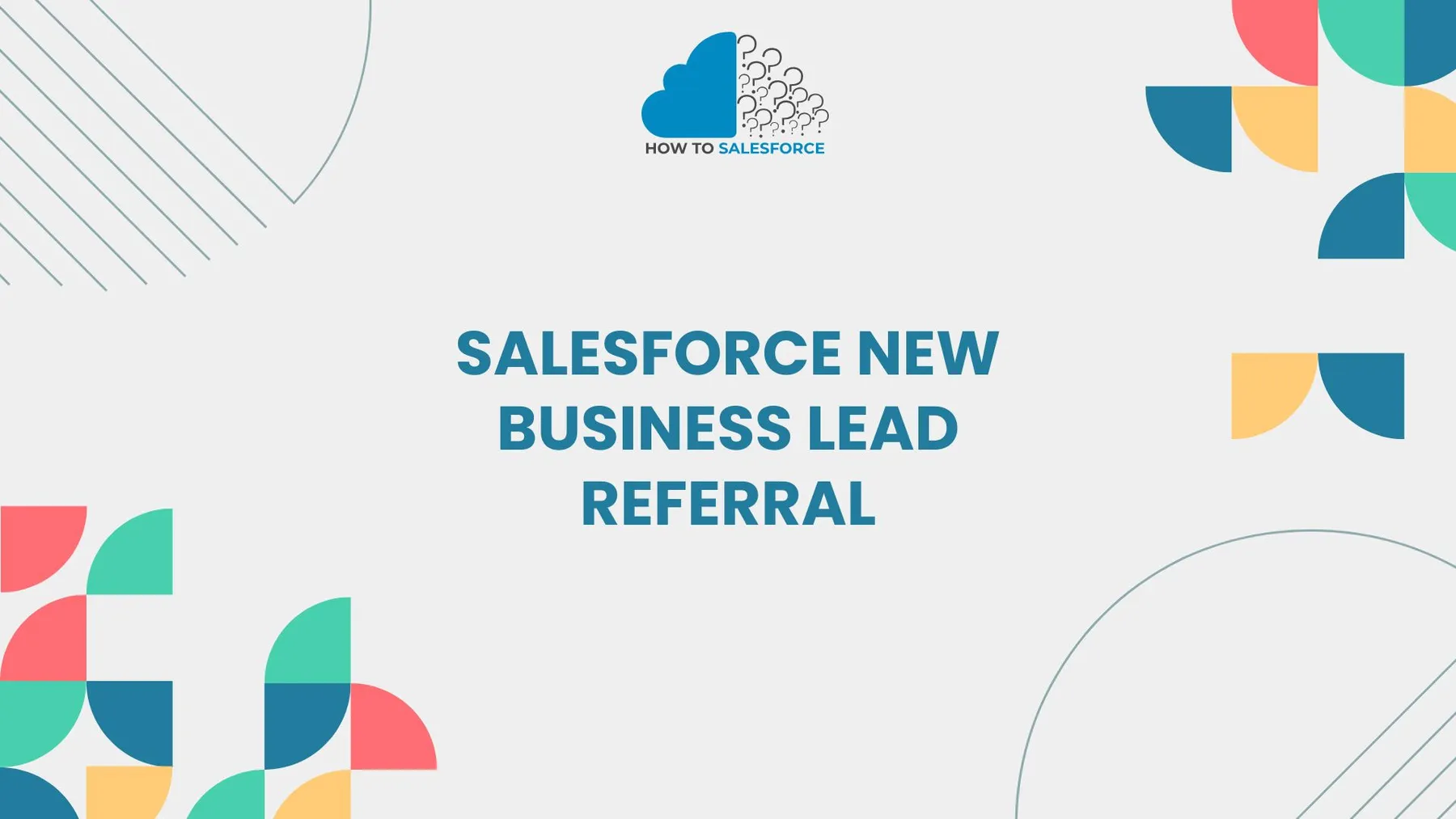What Is a Business Lead Referral
A business lead referral happens when a current customer, partner, or employee suggests a potential client to your organization. This process is facilitated by Salesforce New Business Lead Referral. You may keep track of these leads and follow up with the system. It facilitates communication and boosts your sales efforts.
Please read my other blog: Salesforce Flow Limits
Why Is the Lead Referral Process Important
Firstly, the process of referring leads is essential. Referrals typically convert more quickly. They are extremely valuable because they originate from reliable sources. Businesses can track and manage these leads automatically by utilizing Salesforce. Additionally, it guarantees a smooth workflow for your team and saves time.
How to Set Up a New Business Lead Referral in Salesforce
Secondly, you can create a seamless lead referral process with Salesforce. Make sure you have the appropriate permissions first. You might require administrator access to set up the required parameters. Next, in your Salesforce configuration, create a lead referral process. Here’s how to accomplish it:
- Customize Lead Fields: Create custom fields to collect information about referrals.
- Create a Lead Source: Use a particular lead source (such as “Referral”) for referrals.
- Automate Lead Assignment: Assign referrals to the appropriate team automatically.
- Track Referral Sources: Monitor which channels are producing the most referrals.
Benefits of Using Salesforce for New Business Lead Referrals
Additionally, when managing new business lead referrals, Salesforce has many advantages. It guarantees that no lead is missed and automates procedures. Among the main benefits are:
- Centralized data: All lead data is kept in one location.
- Automated Follow-ups: To guarantee prompt responses, set reminders for follow-ups.
- Enhanced Reporting: Monitor the sources of referrals and examine the rates at which leads are converted.
- Better Collaboration: Teams can collaborate on leads, sharing updates and insights.
Automating Lead Referrals with Workflow Rules
Furthermore, Salesforce allows you to automate the lead referral process. You can automate processes like sending emails or allocating leads to particular users by using workflow rules. In addition to ensuring consistent handling of all referrals, this lessens the workload on your team.
Here’s how you can automate the referral process:
- Create a Workflow Rule: Establish standards for determining when to record a referral.
- Set Actions: Specify actions such as assigning leads to particular users or sending emails.
- Monitor Performance: Track the effectiveness of your automation.
Automation helps your team focus on high-value tasks rather than repetitive actions.
Creating a Referral Program in Salesforce
Referral programs encourage partners and customers to recommend new leads. These referrals are simple to track and manage in Salesforce. You can guarantee prompt follow-ups and automate the process by integrating your referral program with Salesforce.
Use these procedures to set up a referral program in Salesforce:
- Define Rewards: Provide incentives like discounted prices or exclusive deals.
- Create a Referral Form: Make it simple for people to provide recommendations.
- Track Referrals: Track referral status and rewards with custom fields.
- Communicate with Referrers: Automatically update them about the status of their referrals.
Tracking and Analyzing Lead Referrals
Moreover, Salesforce allows you to track and analyze each lead referral. By doing this, you can identify patterns and improve your referral strategies. You can maximize your business efforts by keeping track of which referral sources generate the most leads.
You can use Salesforce’s reports and dashboards to track:
- Lead Conversion Rates: Calculate the proportion of referrals that result in sales.
- Source of Referral: Find out which sources yield the best leads.
- Efficacy of Referral Programs: Monitor the success of your referral program.
This data helps you focus on the most effective referral channels.
Tips for Improving Your Salesforce New Business Lead Referral Process
Remember the following advice to get the most out of your Salesforce lead referral system
- Make It Easy: Make it easier for your partners and clients to refer others.
- Incentives for Referrals: Provide incentives to encourage others to recommend leads.
- Follow Up Quickly: Time is of the essence. Resolve referrals as quickly as you can.
- Monitor and Optimize: Examine your referral procedure regularly and make adjustments.
Handling Lead Referrals from Different Channels
You will receive lead referrals from various channels, such as:
- Customer Referrals: New leads are referred by current clients.
- Partner Referrals: You may receive referrals from business partners.
- Employee Referrals: New business leads brought in by your staff.
Salesforce helps you organize and categorize leads from all of these channels. Custom lead sources can assist you in tracking each lead’s origins. This guarantees that you can assess each referral channel’s efficacy.
Using Lead Scoring for Referrals
Furthermore, salesforce offers a robust system for scoring leads. By scoring leads, you can rank the most promising referrals. A lead’s score may be determined by factors like industry, degree of participation, or prior exchanges.
Your sales team can concentrate on the leads that have the highest conversion rates thanks to lead scoring. It also makes it easier for your team to handle the flood of referrals. Scoring guarantees that you are concentrating your efforts on the appropriate opportunities.
Creating Custom Reports for Referrals
Salesforce’s custom reports can provide valuable information into your referral process. You may track specific metrics, like:
- Number of Referrals: The quantity of leads that have been generated by referrals.
- Effectiveness of Lead Sources: Which channels generate the highest-priced leads?
- Conversion Rate: refers to the percentage of referrals that result in actual business.
Making personalized reports gives you a better understanding of how well your referral system is working. This information enables you to modify your tactics for improved outcomes.
Building Strong Relationships with Referrers
Strong relationships are necessary for a referral process to be successful. Keep in touch with people who recommend leads at all times. Inform them of the status of their referrals and thank them for their efforts. Developing solid relationships expands your business network and guarantees ongoing referrals.
Conclusion
To sum up, one effective tool is the Salesforce new business lead referral system. It aids companies in effectively capturing, handling, and converting leads. You can maximize your sales efforts by establishing automated procedures and monitoring the sources of referrals. To get the most out of your Salesforce referral process, adhere to the advice and tactics provided here. Lead referrals can be a major source of business growth if handled properly.


